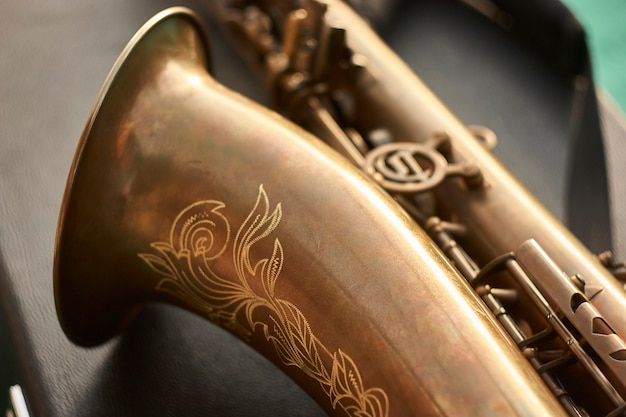

There are really two items that become very dominant in "VI Lore": where the horn was assembled (Europe or the US) and what the serial number range of the horn is. The vast majority have good intonation, tho. This is due to the fact that the VI is hand-finished and hand-assembled. and here's one that's actually true: some VI's have rather poor intonation.

Horns made after 1965 or so have less elaborate engraving because the head Selmer engraver died (this may actually be true).(One story is that early VI's are made from melted-down artillery shells. Horns made after 1965 have a different quality of brass and, because of this, have worse timbre.Horns with a five digit serial number are the best (see the discussion, below).I mention them here for sake of completeness, not necessarily because they're true: There are a few "old wives' tales" about the VI. The Mark VI can fill all of those roles EXTREMELY well, but it doesn't necessarily do them the best: I much preferred my Buffet Dynaction alto for classical work and I thought that my gold-plated True Tone bari might have been the best sounding bari for classical, but the VI blew those horns away (sorry pun intended) because the VI had so much better keywork, feel and response that it drowned out the main advantages of my other horns, tone and better intonation.

In my polling, the Mark VI never rates as the BEST horn in any single category, but it is (arguably) the best all-around horn: the Mark VI was not designed as a specifically big band horn (like the Conn M series), specifically as a jazz horn (like the King Super 20), or as a classical horn (like the Buescher Aristocrat series). The VI is a very rugged horn and, even when badly damaged, can be repaired and be put in almost new shape fairly easily. Almost all modern horns base their keywork on the Mark VI. The world's most economical and most ergonomic keywork (OK, maybe a Buffet S1 is a bit better, but Buffet based their keywork design on Selmer's).I've played at least a dozen Mark VI's in all pitches except sopranino and bass, and I've come to a few conclusions about why the VI is the most popular and best horn ever made: Allegedly, this is also true for the early S80 sopranino, soprano, baritone and bass. I can't confirm that without checking out one of these horns with a caliper and seeing if the bore size and tonehole placement is identical, but it's something interesting to consider if you're in the market for one of these pitches. I've also heard more than one person insist that the first few horns of these pitches labeled "Mark VII" are "really" Mark VI's with different keywork. (For more, info, see my page on the Mark 7.) In all the instances I've seen, these horns are simply "stock" VI's with different engraving and sometimes slightly different keywork: there are no bore changes. There is, however, the occasional "Mark 7 era" bari, etc., that is actually labelled "Mark 7". They continued with the name of Mark VI up to and including part of the Super 80 era and were made with Mark VI tooling, with sometimes a bit different keywork (hence the approximate serial number ranges, above). Officially, there were no Mark 7 sopraninos, sopranos or baritones. A factory colored-lacquer horn will have the engraving "cut" through the colored lacquer, revealing the gold lacquer below. If you see a Mark VI with colored lacquer, go ahead and take a look, but beware of imitations. These horns are fairly rare and do include white, black, and possibly red ("rose") and/or blue. Speaking of interesting finishes, Selmer started experimenting with colored lacquers, for a brief time, during the VI model run. However the configuration of low A with altissimo F# (Selmer catalog #52AF) is probably the least common and the least common finish was gold plate. I have seen a lot of these horns - and even played a couple - and can conclude from this that there are many more than the 200 or so that is generally rumored. Sax himself created this variant - AND Selmer themselves sold low A horns around the time the 22 or 26 was available - this was the first "large production" of any low A altos. While the low A alto isn't a new idea - some sources suggest that A. The really interesting development with the introduction of the Mark VI is the first widely-available low A alto.


 0 kommentar(er)
0 kommentar(er)
